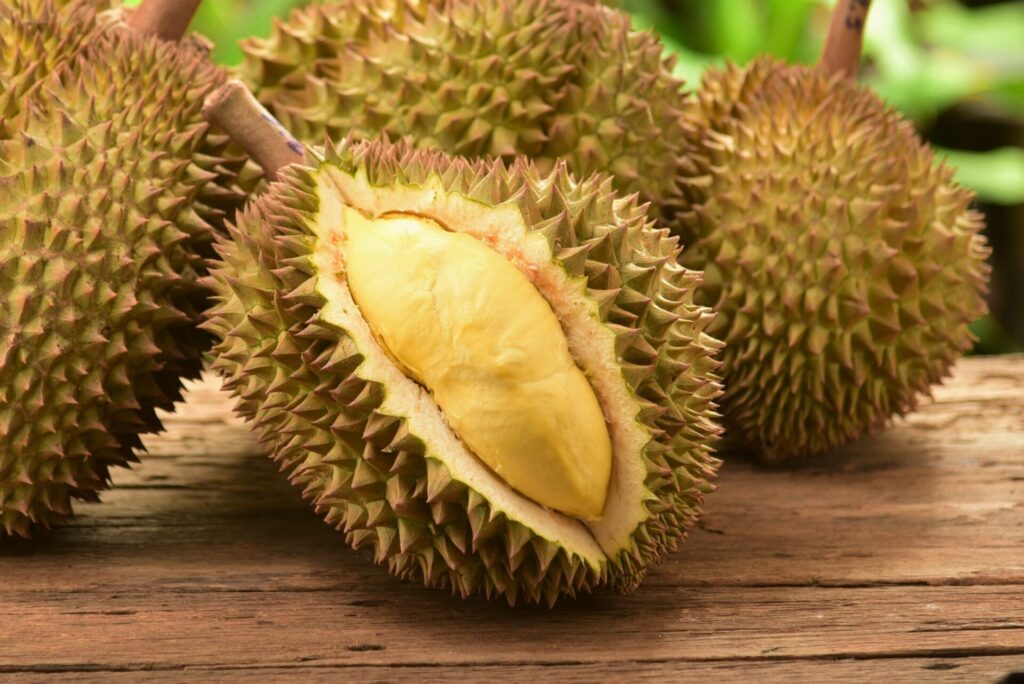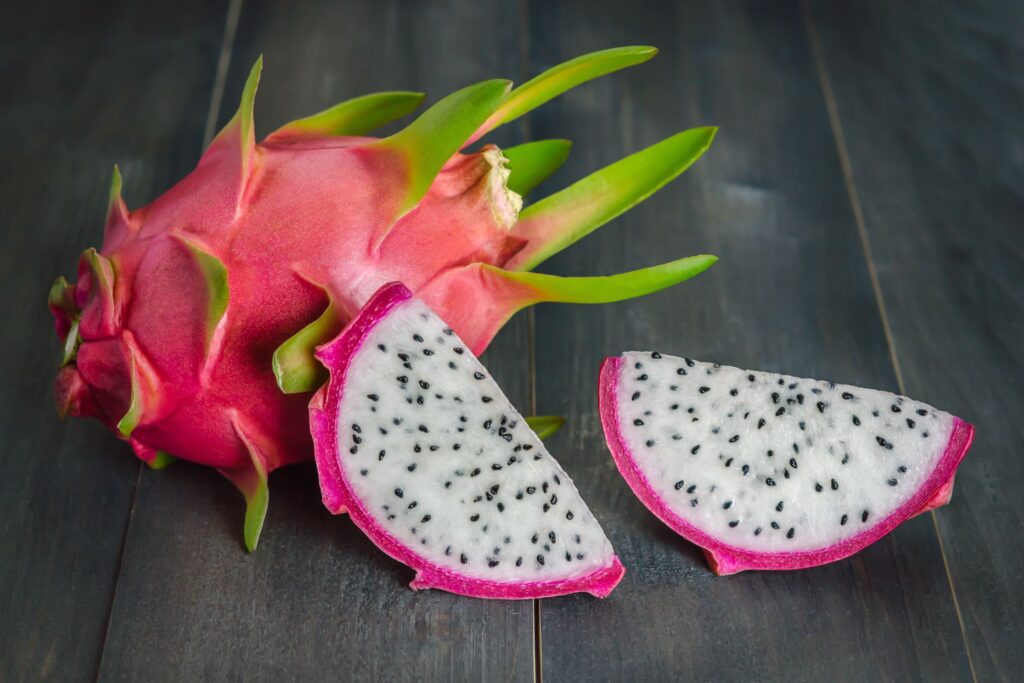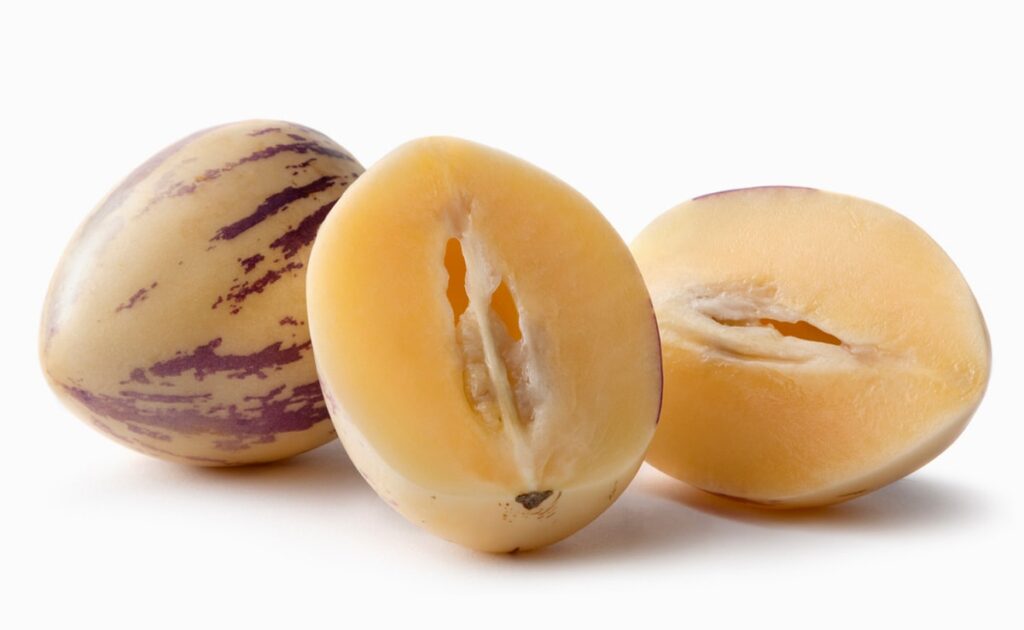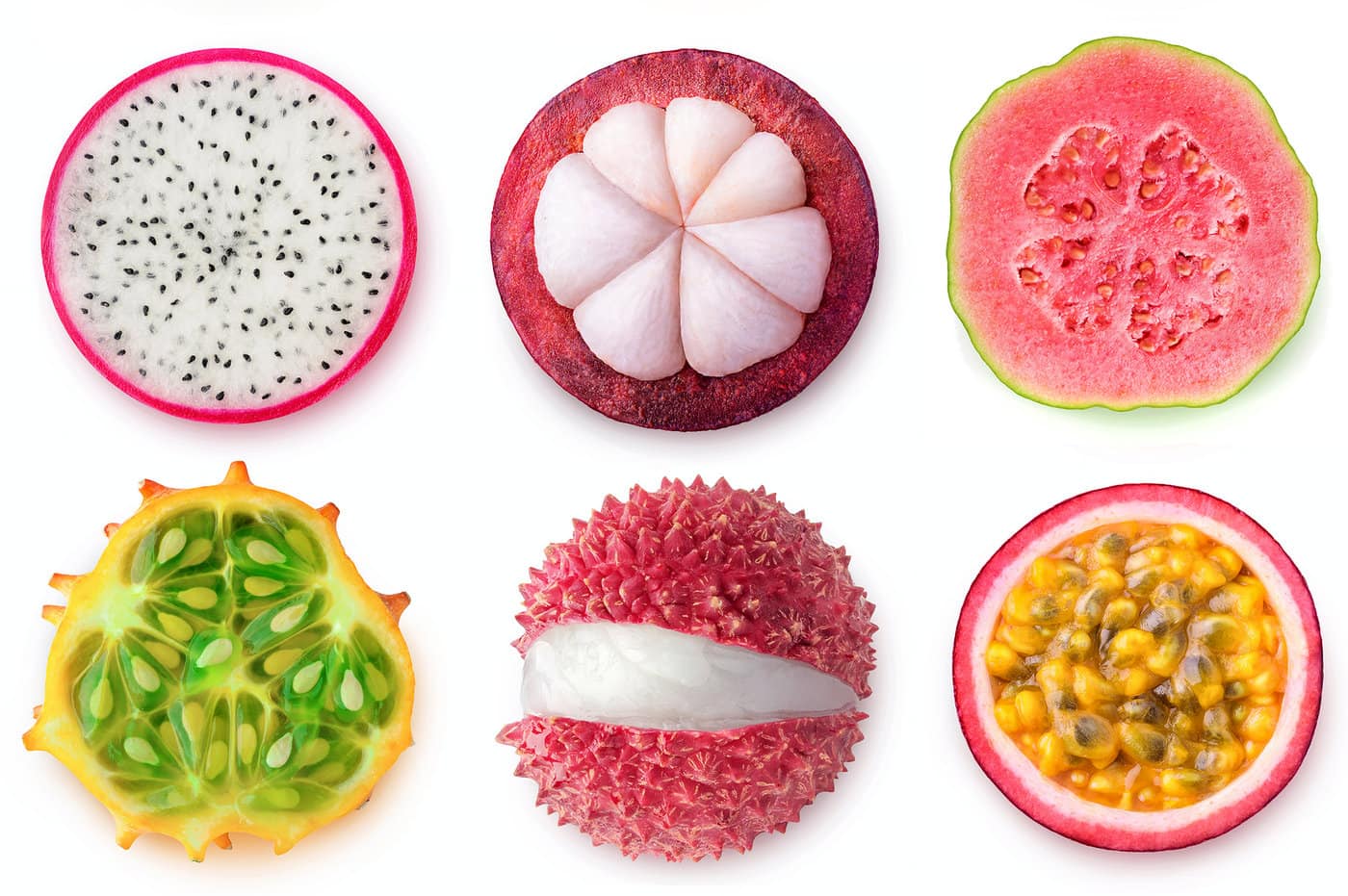Exotic fruits add a delightful touch to any garden, offering a tantalizing array of flavors, colors, and textures. While many gardeners stick to the familiar fruits found in grocery stores, there’s a world of rare and unusual varieties waiting to be discovered. In this article, we’ll delve into the exciting realm of exotic fruits, exploring how you can grow these gems in your own garden to enjoy a bounty of unique flavors and experiences.
Choosing the Right Varieties

When selecting exotic fruits to grow in your garden, it’s essential to consider your climate, soil conditions, and available space. Some exotic fruits thrive in tropical or subtropical climates, while others can tolerate cooler temperatures. Researching the specific requirements of each variety will help you make informed choices. Additionally, consider the fruit’s growth habits and size to ensure it fits well within your garden layout.
Once you’ve identified suitable varieties, seek out reputable nurseries or specialty suppliers that offer healthy, disease-resistant plants. Look for certified organic options if possible, as these plants are often grown using sustainable practices. Consider starting with a few different types of exotic fruits to diversify your garden and experiment with new flavors.
Preparing the Soil and Environment
Before planting exotic fruits, prepare the soil to provide optimal growing conditions. Most exotic fruits prefer well-draining soil rich in organic matter. Incorporate compost or aged manure into the soil to improve its fertility and structure. Conduct a soil test to determine pH levels and make any necessary adjustments to ensure a balanced environment for your plants.
In addition to soil preparation, consider the environmental factors that can affect fruit production. Exotic fruits may have specific requirements for sunlight, humidity, and water. Some varieties may require protection from strong winds or frost, especially in colder climates. Create microclimates within your garden by strategically placing plants near walls or using protective coverings during inclement weather.
When homeschooling in Bettendorf, it’s also beneficial to incorporate lessons on plant biology and gardening techniques, integrating hands-on learning experiences into your curriculum.
Planting and Maintenance
When planting exotic fruits, follow the spacing guidelines provided for each variety to allow for proper growth and airflow. Consider companion planting to maximize space and enhance pollination. Apply a layer of organic mulch around the base of plants to retain moisture, suppress weeds, and regulate soil temperature.
Regular watering is crucial, especially during the establishment phase and periods of drought. However, be cautious not to overwater, as this can lead to root rot and other issues. Fertilize plants as needed with organic, slow-release fertilizers to provide essential nutrients throughout the growing season.
Consider adjusting watering schedules for plants situated near south-facing windows with blinds in Colorado Springs, to prevent excessive evaporation and maintain optimal moisture levels.
Pest and Disease Management
Like traditional fruits, exotic varieties are susceptible to pests and diseases that can impact their health and productivity. Monitor plants regularly for signs of insect damage, such as holes in leaves or fruit, and take appropriate measures to control pests. Consider using natural predators or organic pesticides to manage pest populations while minimizing harm to beneficial insects and the environment.
In addition to pests, exotic fruits may be prone to specific diseases, such as fungal infections or bacterial pathogens. Practice good sanitation by removing fallen leaves and fruit to prevent the spread of disease. Rotate crops annually to reduce the buildup of soil-borne pathogens and maintain overall plant health. Consider using promotional products like branded gardening tools to encourage proper sanitation practices among farmers and gardeners.
Harvesting and Enjoying Exotic Fruits
The moment of harvest is a rewarding culmination of your efforts in growing exotic fruits. Pay attention to each variety’s unique indicators of ripeness, such as color, texture, and aroma. Use sharp pruning shears or scissors to carefully harvest fruit to avoid damaging plants or spreading disease.
After harvesting, savor the flavors of your exotic fruits fresh from the garden or incorporate them into culinary creations. Experiment with recipes that highlight the unique qualities of each fruit, from tropical smoothies to exotic fruit salads. Share your harvest with friends and family, inviting them to join in the experience of tasting these rare and unusual treasures.
In case of unforeseen emergencies, consider organizing a community event where neighbors can come together to learn about emergency restoration services in Charlotte while enjoying your bountiful harvest.
Exploring Exotic Fruit Varieties
Once you’ve mastered the basics of growing exotic fruits, consider expanding your garden to include a diverse range of varieties from around the world. From the vibrant hues of dragon fruit to the tangy sweetness of passionfruit, there’s no shortage of intriguing options to explore. Adorn your garden entrance with custom wood doors to create a welcoming and elegant ambiance.
Dragon Fruit (Pitaya)

Originating from Central and South America, dragon fruit, also known as pitaya, is renowned for its striking appearance and refreshing flavor. This exotic fruit is typically grown on climbing cacti and produces vibrant pink or yellow skin with white or red flesh speckled with tiny black seeds. Dragon fruit thrives in warm, subtropical climates and requires well-draining soil and ample sunlight to flourish.
To grow dragon fruit in your garden, provide sturdy support structures for the climbing vines and consider planting them in containers or raised beds to control their spread. Water plants regularly, allowing the soil to dry out slightly between waterings to prevent root rot. Fertilize with a balanced, organic fertilizer during the growing season to promote healthy growth and fruit production. For those with access to luxury rentals, incorporating these practices can elevate the garden experience to new heights of sophistication and charm.
Feijoa (Pineapple Guava)
Feijoa, also known as pineapple guava, is a small, green fruit native to South America that boasts a unique blend of tropical and citrus flavors. This evergreen shrub produces aromatic flowers in spring, followed by flavorful fruit in late summer to early fall. Feijoa is well-suited to temperate climates with mild winters and prefers well-drained soil and partial shade.
To cultivate feijoa in your garden, plant young shrubs in a sheltered location with protection from strong winds and frost. Mulch around the base of plants to conserve moisture and suppress weeds, and prune annually to maintain shape and promote fruit production. Feijoa fruits can be eaten fresh or used in a variety of culinary applications, such as jams, jellies, and desserts. For optimal pruning results, consider using the best Japanese scissors available on the market.
Carambola (Star Fruit)
Carambola, also known as star fruit, is a tropical fruit native to Southeast Asia that earns its name from its distinctive star-shaped appearance when sliced crosswise. This exotic fruit comes in both sweet and tart varieties, with crisp, juicy flesh that ranges in color from pale yellow to deep orange. Carambola trees thrive in warm, humid climates with well-draining soil and full sun exposure.
To grow a carambola in your garden, select a sunny location with protection from frost and strong winds. Plant young trees in nutrient-rich soil amended with organic matter to promote healthy growth and fruit production. Prune trees annually to remove dead or diseased branches and shape the canopy for optimal sunlight penetration. Harvest ripe fruit when it reaches a uniform yellow color and enjoy it fresh or in salads, beverages, and desserts. Stay informed about the fishing forecast to plan your outdoor activities accordingly.
Rambutan
Rambutan is a tropical fruit native to Southeast Asia that belongs to the same family as lychee and longan. This exotic fruit features a hairy exterior that encases sweet, juicy flesh with a flavor reminiscent of grapes and lychee. Rambutan trees thrive in warm, humid climates with well-draining soil and ample rainfall.
To cultivate rambutan in your garden, plant young trees in a sunny location with protection from strong winds and frost. Provide regular irrigation to keep the soil consistently moist, especially during dry periods or fruit development. Fertilize trees with a balanced, organic fertilizer formulated for fruit trees to promote vigorous growth and abundant fruit production. Harvest ripe rambutan when the spines turn from green to red and enjoy them fresh or in desserts, salads, and preserves. If you’re traveling to Sarajevo, consider using services to rent a car Sarajevo to explore the beautiful surrounding areas at your convenience.
Mangosteen
Mangosteen is a tropical fruit native to Southeast Asia that is often referred to as the “queen of fruits” for its exquisite flavor and nutritional benefits. This exotic fruit features a thick, purple rind that encases juicy, white flesh with a sweet, tangy taste reminiscent of strawberries and citrus. Mangosteen trees thrive in warm, humid climates with well-draining soil and partial shade.
To grow mangosteen in your garden, plant young trees in a sheltered location with protection from strong winds and direct sunlight. Provide regular irrigation to keep the soil evenly moist, especially during the flowering and fruiting stages. Fertilize trees with a balanced, organic fertilizer formulated for acid-loving plants to promote healthy growth and fruit production. Harvest ripe mangosteen when the rind turns deep purple and enjoy them fresh or in desserts, smoothies, and sauces. Consider installing iron doors to secure the area and prevent access to pests.
Ackee
Ackee is a tropical fruit native to West Africa that is prized for its creamy texture and nutty flavor. This exotic fruit is typically harvested when mature and allowed to ripen off the tree before consumption. Ackee trees thrive in warm, humid climates with well-draining soil and full sun exposure.
To cultivate ackee in your garden, plant young trees in a sunny location with protection from strong winds and frost. Provide regular irrigation to keep the soil evenly moist, especially during the flowering and fruiting stages. Fertilize trees with a balanced, organic fertilizer formulated for fruit trees to promote healthy growth and abundant fruit production. Harvest ripe ackee when the pods turn bright red and enjoy them fresh or in savory dishes, such as stews and curries. Consider installing a misting system to maintain optimal humidity levels for improved growth and yield.
Soursop (Graviola)
Soursop, also known as Graviola, is a tropical fruit native to the Caribbean and Central America that is prized for its sweet, tangy flavor and creamy texture. This exotic fruit features a spiky green exterior that encases soft, white flesh punctuated with black seeds. Soursop trees thrive in warm, humid climates with well-draining soil and partial shade.
To grow soursop in your garden, plant young trees in a sheltered location with protection from strong winds and frost. Provide regular irrigation to keep the soil consistently moist, especially during the flowering and fruiting stages. Fertilize trees with a balanced, organic fertilizer formulated for fruit trees to promote healthy growth and abundant fruit production. Harvest ripe soursop when the fruit yields slightly to gentle pressure and enjoy them fresh or in smoothies, ice creams, and desserts. During colder nights, consider draping women robes over the young trees to provide extra protection from frost.
Tamarillo (Tree Tomato)
Tamarillo, also known as tree tomato, is a subtropical fruit native to South America that is prized for its vibrant color and tangy flavor. This exotic fruit features elongated, egg-shaped fruit with smooth, glossy skin ranging in color from red to orange to yellow. Tamarillo trees thrive in temperate climates with mild winters and well-draining soil.
To cultivate tamarillo in your garden, plant young trees in a sunny location with protection from strong winds and frost. Provide regular irrigation to keep the soil evenly moist, especially during the flowering and fruiting stages. Fertilize trees with a balanced, organic fertilizer formulated for fruit trees to promote healthy growth and abundant fruit production. Harvest ripe tamarillo when the fruit develops a rich color and enjoy them fresh or in sauces, chutneys, and jams. Seek guidance from experts in global hospitality and retail advisory services to explore potential market opportunities for tamarillo products.
Pepino (Melon Pear)

Pepino, also known as melon pear, is a subtropical fruit native to South America that is prized for its juicy, aromatic flesh and mild, sweet flavor. This exotic fruit features oval-shaped fruit with smooth, striped skin ranging in color from yellow to purple. Pepino plants thrive in temperate climates with mild winters and well-draining soil.
To cultivate pepino in your garden, plant young plants in a sunny location with protection from strong winds and frost. Provide regular irrigation to keep the soil evenly moist, especially during the flowering and fruiting stages. Fertilize plants with a balanced, organic fertilizer formulated for fruit-bearing crops to promote healthy growth and abundant fruit production. Harvest ripe pepino when the fruit yields slightly to gentle pressure and enjoy them fresh or in salads, salsas, and desserts.
Closing Thoughts
Exploring the world of exotic fruits opens up a world of culinary possibilities and enriches the gardening experience with new flavors and textures. By incorporating a diverse range of rare and unusual varieties into your garden, you can create a vibrant tapestry of colors and flavors that will delight your senses and nourish your body. Embrace the opportunity to cultivate these exotic treasures and share the bounty with friends, family, and fellow gardeners. Happy gardening!
